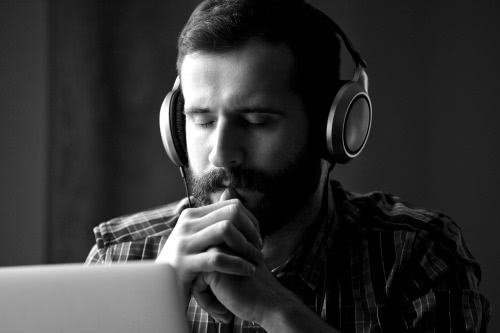This post looks at loudness and sharpness, two important psychoacoustic metrics. Because they have to do with human perception, these factors are by definition subjective. And yet they’re not entirely subjective. People tend to agree on when, for example, one sound is twice as loud as another, or when one sound is sharper than another.

Loudness
Loudness is the psychological counterpart to sound pressure level. Sound pressure level is a physical quantity, but loudness is a psychoacoustic quantity. The former has to do with how a microphone perceives sound, the latter how a human perceives sound. Sound pressure level in dB and loudness in phon are roughly the same for a pure tone of 1 kHz. But loudness depends on the power spectrum of a sound and not just it’s sound pressure level. For example, if a sound’s frequency is too high or too low to hear, it’s not loud at all! See my previous post on loudness for more background.
Let’s take the four guitar sounds from the previous post and scale them so that each has a sound pressure level of 65 dB, about the sound level of an office conversation, then rescale so the sound pressure is 90 dB, fairly loud though not as loud as a rock concert. [Because sound perception is so nonlinear, amplifying a sound does not increase the loudness or sharpness of every component equally.]
Here are the audio files from the previous post:
Clean note:
Clean chord:
Distorted note:
Distorted chord:
Here’s the loudness, measured in phons, at both sound pressure levels.
|-----------------------+-------+-------| | Sound | 65 dB | 90 dB | |-----------------------+-------+-------| | Clean note | 70.9 | 94.4 | | Clean chord | 71.8 | 95.3 | | Note with distortion | 81.2 | 103.7 | | Chord with distortion | 77.0 | 99.6 | |-----------------------+-------+-------|
While all four sounds have the same sound pressure level, the undistorted sounds have the lowest loudness. The distorted sounds are louder, especially the single note. Increasing the sound pressure level from 65 dB to 90 dB increases the loudness of each sound by roughly the same amount. This will not be true of sharpness.
Sharpness
Sharpness is related how much a sound’s spectrum is in the high end. You can compute sharpness as a particular weighted sum of the specific loudness levels in various bands, typically 1/3-octave bands. This weight function that increases rapidly toward the highest frequency bands. For more details, see Psychoacoustics: Facts and Models.
The table below gives sharpness, measured in acum, for the four guitar sounds at 65 dB and 90 dB.
|-----------------------+-------+-------| | Sound | 65 dB | 90 dB | |-----------------------+-------+-------| | Clean note | 0.846 | 0.963 | | Clean chord | 0.759 | 0.914 | | Note with distortion | 1.855 | 2.000 | | Chord with distortion | 1.281 | 1.307 | |-----------------------+-------+-------|
Although a clean chord sounds a little louder than a single note, the former is a little sharper. Distortion increases sharpness as it does loudness. The single note with distortion is a little louder than the other sounds, but much sharper than the others.
Notice that increasing the sound pressure level increases the sharpness of the sounds by different amounts. The sharpness of the last sound hardly changes.

Can you please quote what dB value you are referring too? I understand you are talking about sound pressure level but your dB reference level is not stated. In addition you do not quote the weighting curve you are quoting these dB values at. Please state if it is dB(Z), dB(C) or dB(A).
I want to analyze properties of some voice call recordings to determine which call has the best sound quality. Could you please tell me how i Can proceed? will sharpness and loudness be enough ? what other conditions should be considered?